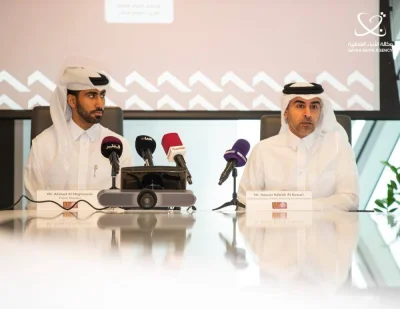By any measure, Saudi Arabian Oil Co is in a league of its own.
Take its oil reserves - roughly 260bn barrels, nearly 10 times those of the global ultra-major Exxon Mobil Corp; or its daily production of 10mn barrels, more than the domestic output of every US oil company combined. Which is why the mere suggestion that this state-owned oil giant might go public seems a bit outlandish.
Would Saudi Arabia really place its crown jewel in the hands of fickle investors? The answer is maybe. On Friday, Saudi Aramco confirmed it was studying options to allow “broad public participation in its equity through the listing in the capital markets” of either the whole group or a subsidiary.
The statement came a day after Mohammed bin Salman, the kingdom’s deputy crown prince, said in a newspaper interview that Aramco was considering an initial public offering as Riyadh confronts the hard economic and geopolitical realities of cheaper and cheaper crude.
It’s impossible to overstate the power Aramco wields in Saudi Arabia and the global oil market. The company traces its origins back to the oil shortages of World War I.
What is its worth? “Trillions of dollars,” according to The Economist, which first reported the prince’s comments. That would easily rank Aramco among the world’s most valuable companies, well above Apple Inc, at $600bn. Based simply on its oil reserves and using a conservative valuation of roughly $10 per barrel, Aramco could be worth more than $2.5tn. And yet stock market investors rarely value state-owned oil companies as dispassionately as the numbers suggest - or as government officials might hope. Should Aramco go public, it might actually fetch as little as $100bn, based on valuations applied to similar state-owned groups.
Russia’s Rosneft is paradigmatic. The Kremlin-owned company is the largest oil producer in Russia and one of the largest in the world. It pumps 5mn bpd - far more than Chevron Corp. Yet its market capitalisation is just $35bn, a fraction of Chevron’s $160bn. Petroleo Brasileiro is worth even less, $23bn, even though it controls nearly every aspect of Brazil’s oil industry. Of all the major state-owned oil groups, only Chinese companies such as PetroChina Co have large market capitalisations, running in the hundreds of billions of dollars.
The reasons? One is political risk, real or perceived. Investors often worry governments will put their interests ahead of shareholders. Others are a lack of transparency and, in some cases, corruption. In the case of Saudi Arabia, Jason Bordoff, director of the Center on Global Energy Policy at Columbia University and a former senior oil official at the White House, said that some people have “raised questions about the true size” of Saudi Aramco’s oil reserves. The kingdom has never published an audit of the reserves. Most details about the size of its giant fields remain secret. What’s more, “Aramco has obligations beyond producing just oil that other publicly listed companies do not have, such as, for example, running a good part of the health-care system,” Bordoff said.
Granted, Saudi Aramco is widely regarded as the closest that a state oil company can get to an Exxon. It has a reputation for meritocracy going back to its days as a subsidiary of the predecessors of Exxon and Chevron. It is also a leader in petroleum engineering technology.
Mohammed bin Salman, the prince, told The Economist he was “enthusiastic” about a potential stock offering. “This is something that is being reviewed, and we believe a decision will be made over the next few months,” the prince was quoted as saying, adding that an IPO would bring “transparency” to Aramco. The IPO discussions are preliminary and Riyadh could opt to list smaller units within Saudi Aramco, such as one of its giant domestic refineries, as a first step.
On Friday, Aramco said one option was to float “a bundle its downstream subsidiaries.” That could create a valuation benchmark for the whole company, without the risk of placing a value on its oil reserves or losing face should the stock later decline.
The Saudi move comes as oil prices trade at their lowest in 12 years, flirting with the $30 a barrel level as Opec floods the market and Chinese demand slows down. On Friday, Brent crude, the global oil benchmark, traded at $34.50 a barrel.
For investors, a smaller chunk of Aramco could be easier to value - and to swallow. And the kingdom has already some experience. In January 2008, it listed a venture called Rabigh Refining and Petrochemical Co, with Aramco retaining a 37.5% stake, Sumitomo Chemical Co Ltd another 37.5% and the rest sold into the local market. Rabigh, which processes about 400,000 bpd, is today worth about $2.4bn. The Rabigh listing also showed the enormous interest within Saudi Arabia to get a piece of the country’s oil jewels. The IPO was five times oversubscribed, with 4.5mn Saudis buying shares.
Yet Rabigh is also an example of the potential pitfalls. As news hit Thursday of the possible IPO for Aramco, Rabigh shares fell to an all-time low, leaving them down 51% since the IPO. That shows that while Aramco may be in a league of its own, it still faces the same challenge as everyone else in the oil business: The lowest crude prices in 12 years.

Based simply on its oil reserves and using a conservative valuation of roughly $10 per barrel, Aramco could be worth more than $2.5tn


